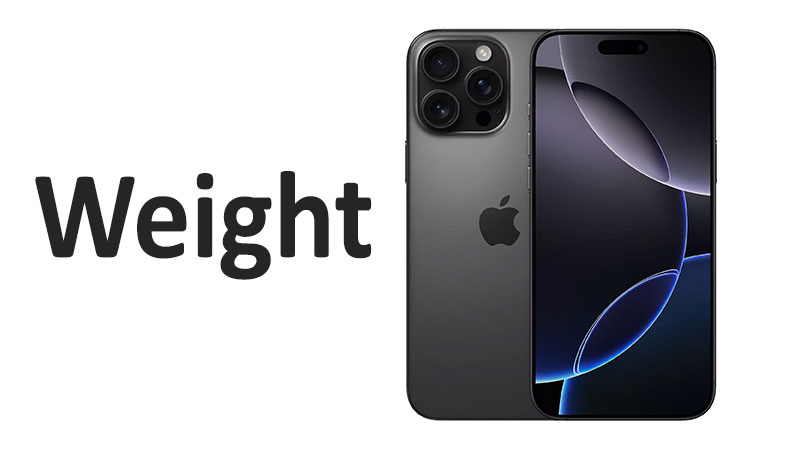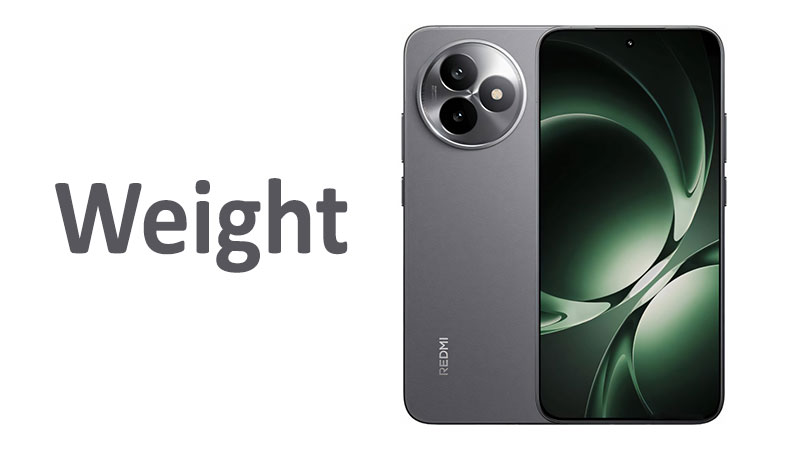When you’re choosing a new smartphone, specifications like processor speed, camera quality, and screen size often take center stage. However, an often-overlooked but crucial factor is the device’s weight. The feel of a phone in your hand is a significant part of the user experience. The Apple iPhone 16 Pro Max is no exception. Its weight, measured in grams and ounces, has a direct impact on comfort, portability, and even its perceived durability. In this comprehensive article, we’ll dive deep into the weight of the iPhone 16 Pro Max, comparing it to its predecessors and competitors, and discussing what this means for you as a consumer.
Understanding the Weight of the iPhone 16 Pro Max
The iPhone 16 Pro Max weight is an important aspect of its design. Apple has engineered the phone to be a powerhouse, and its physical heft is a direct result of the advanced technology packed inside. The official weight is 227 grams (8.01 ounces). This figure is a precise measurement that tells a lot about the materials and components used in the device.
The Numbers: Grams vs. Ounces
- Grams (g): The metric unit of mass. For tech enthusiasts and global consumers, grams are the standard. The 227g weight is a precise figure that allows for easy comparison with other smartphones.
- Ounces (oz): The imperial unit of weight. Primarily used in the United States, ounces provide a different perspective. At 8.01 ounces, the iPhone 16 Pro Max is on the heavier side for a modern smartphone, though this is by design.
What Contributes to the Weight?
The weight of the iPhone 16 Pro Max is a function of several key components:
- Large Display: The phone features a massive 6.9-inch display, the largest ever on an iPhone. A larger screen means more glass, a heavier OLED panel, and a bigger internal frame to support it.
- Bigger Battery: To power the bigger screen and the A18 Pro chip, a larger, denser battery is required. The iPhone 16 Pro Max’s battery is designed for long-lasting use, which adds considerable mass.
- Camera System: The advanced triple-camera system, including the 48MP main camera and the periscope telephoto lens, contains complex optics and sensors that are not light.
- Titanium Frame: While titanium is lighter than the stainless steel used in older models, the sheer size of the phone means the frame still contributes to the overall weight. The frame’s rigidity is a trade-off for its density.
Specialized Comparisons: iPhone 16 Pro Max vs. Its Peers
Comparing the iPhone 16 Pro Max’s weight to other phones provides valuable context. It helps you understand where the device stands in the market and what you are gaining or sacrificing with its weight.
iPhone 16 Pro Max vs. iPhone 15 Pro Max
The iPhone 15 Pro Max weighed 221g. The iPhone 16 Pro Max, at 227g, is slightly heavier. This small increase of 6 grams is a testament to Apple’s engineering. They’ve managed to increase the screen size to 6.9 inches and add new internal components while keeping the weight gain to a minimum. The use of a titanium frame is a key factor in this achievement, as it’s significantly lighter than the stainless steel of the iPhone 14 Pro Max (240g).
iPhone 16 Pro Max vs. iPhone 16 Pro
The iPhone 16 Pro is the smaller sibling of the Pro Max, weighing in at 199g. This difference of 28 grams is substantial. For users who prioritize one-handed use and pocketability, the iPhone 16 Pro is the clear choice. The Pro Max, with its extra weight, is better suited for users who value a large display and longer battery life above all else.
iPhone 16 Pro Max vs. Competitors
When compared to other flagship smartphones, the iPhone 16 Pro Max holds its own. For example, the Samsung Galaxy S25 Ultra is a direct competitor. Both are large, premium devices with advanced features. While the exact weight of the S25 Ultra can vary based on its build materials, it often falls in a similar weight class to the iPhone 16 Pro Max. This shows that a heavier, more substantial build is a common trait among high-end “ultra” phones.
Pros and Cons of the iPhone 16 Pro Max’s Weight
The weight of a phone isn’t simply a number; it has tangible benefits and drawbacks. A heavier phone can feel more premium, but it can also be a burden.
Pros of a Heavier Phone
- Premium Feel: A phone with some heft feels solid and well-built. The weight can give a sense of quality and durability, reassuring users that they are holding a high-end device.
- Better Grip: A bit of weight can make a phone feel more secure in your hand. This can reduce the chance of accidental drops.
- Weight Distribution: Apple has meticulously balanced the weight of the iPhone 16 Pro Max. This is crucial for a large device. A balanced phone feels less top-heavy and more comfortable to hold for extended periods.
- Justification for Internal Upgrades: The added weight is a direct result of a larger screen and a bigger battery, both of which are significant upgrades that many users want.
Cons of a Heavier Phone
- Hand and Wrist Strain: Holding a heavy phone for long durations, especially for watching videos or gaming, can lead to hand and wrist fatigue.
- Pocketability: The extra weight and size can make the phone feel bulky in a pocket. This is particularly an issue with tighter clothing.
- Impact on Portability: For users who carry their phone everywhere, every extra gram matters. The iPhone 16 Pro Max may be less convenient for some.
What a Buyer Should Know About the iPhone 16 Pro Max’s Weight
Before you make a purchase, it’s essential to consider how the iPhone 16 Pro Max weight will affect your daily life.
- Try Before You Buy: If possible, go to a store and hold the phone. You can get a feel for its size and weight. A hands-on experience is the best way to know if it’s the right fit for you.
- Weight vs. Features: Remember that the weight is a direct result of the phone’s features. If you need the biggest screen, longest battery life, and most advanced camera system, you have to accept the trade-off of a heavier device.
- Consider Accessories: A case will add to the overall weight. While a case is essential for protection, it’s worth noting that it will make an already heavy phone even heavier. Consider a lightweight case to minimize the added bulk.
- Long-Term Comfort: Think about your usage habits. If you use your phone constantly for media consumption or productivity, the larger size and weight could be a source of discomfort over time. For casual users, this may not be a major issue.
Conclusion
The Apple iPhone 16 Pro Max weight of 227 grams (8.01 ounces) is a key feature of its design. It’s a deliberate choice by Apple to accommodate a larger 6.9-inch display, a more powerful battery, and an advanced camera system. While this makes it a heavier device than its predecessor and its smaller sibling, the iPhone 16 Pro, the weight is a direct result of the high-end technology packed inside.
For those who crave the ultimate iPhone experience, including the largest screen, longest battery life, and most powerful performance, the iPhone 16 Pro Max is an excellent choice, and its weight is a reasonable trade-off. However, for users who prioritize one-handed comfort and portability, the iPhone 16 Pro or other lighter models may be a better option. Ultimately, the best way to determine if the weight is right for you is to experience the phone firsthand.
FAQ
Why is the iPhone 16 Pro Max heavier than the iPhone 15 Pro Max?
The iPhone 16 Pro Max is slightly heavier because it features a larger 6.9-inch display and a larger battery, both of which add to the overall mass of the device.
Is the iPhone 16 Pro Max’s titanium frame lighter than the previous stainless steel?
Yes, the titanium frame of the iPhone 16 Pro Max is lighter and more durable than the stainless steel used in older models like the iPhone 14 Pro Max, which weighed 240g.
Will the extra weight make the phone feel bulky in my pocket?
Yes, due to its weight and large size, the iPhone 16 Pro Max may feel noticeable or bulky in some pockets, especially in tighter clothing.
How does the weight of the iPhone 16 Pro Max compare to other “ultra” phones?
The iPhone 16 Pro Max’s weight is comparable to other premium, large-screen flagships like the Samsung Galaxy S25 Ultra, which are also built with advanced, heavy-duty components.
Does adding a phone case significantly increase the weight?
Yes, a phone case can add anywhere from 10 to 50 grams or more, which will make the phone feel even heavier in your hand and pocket.



